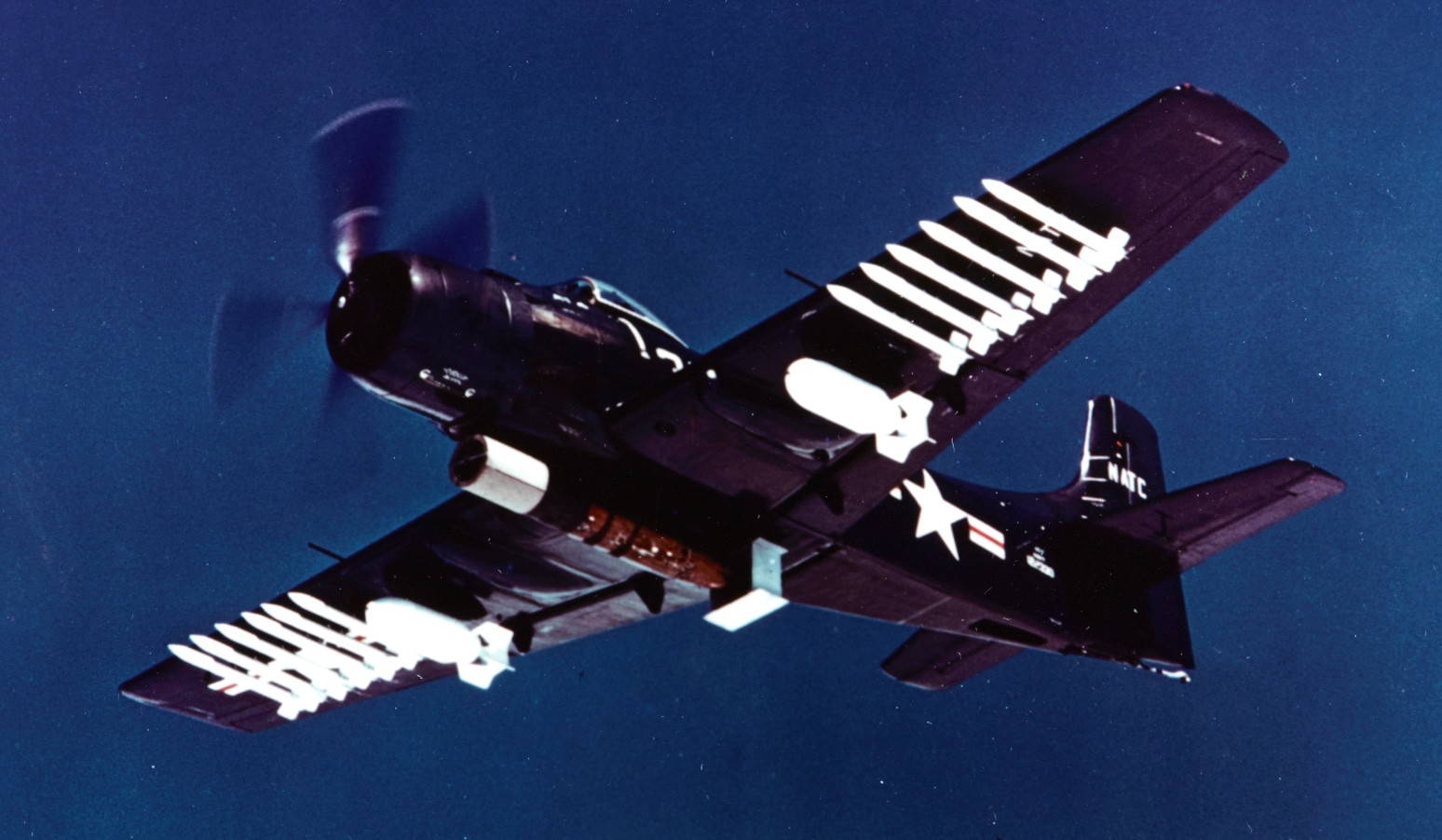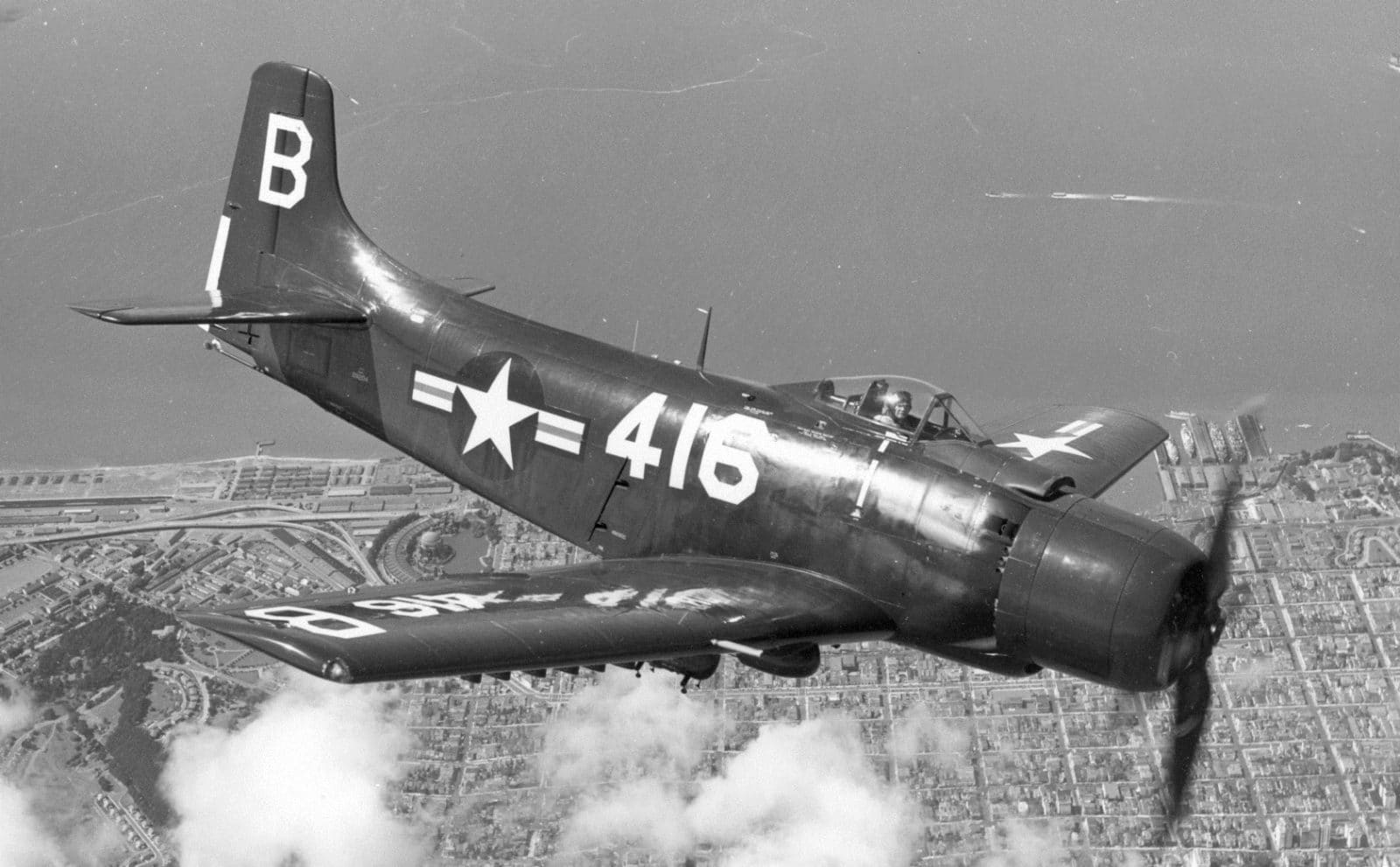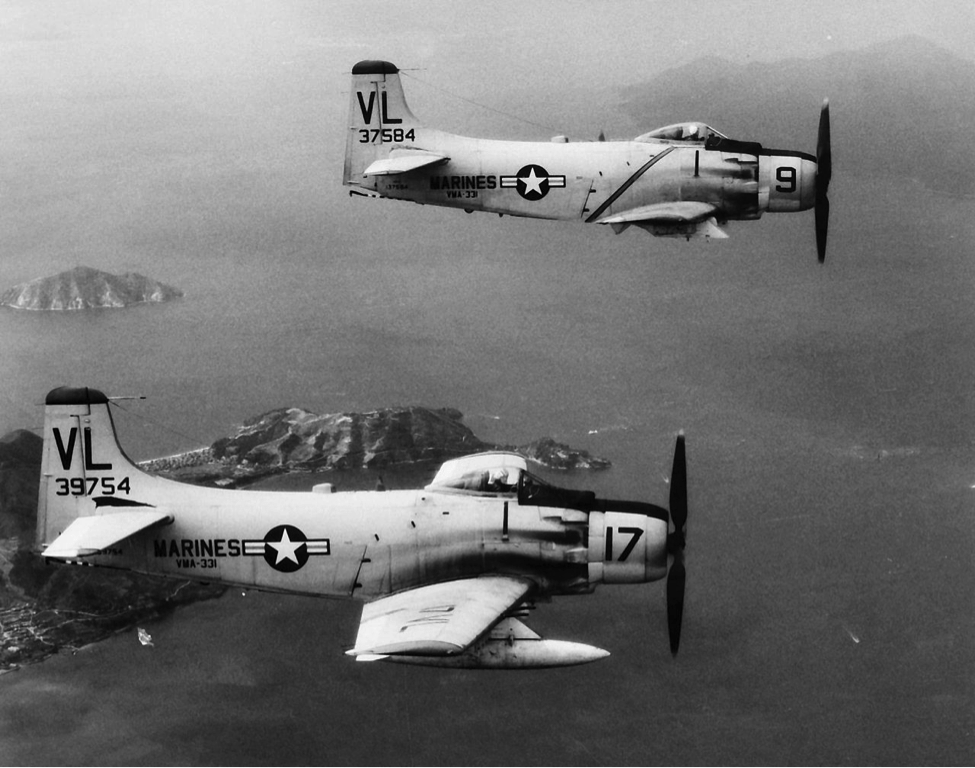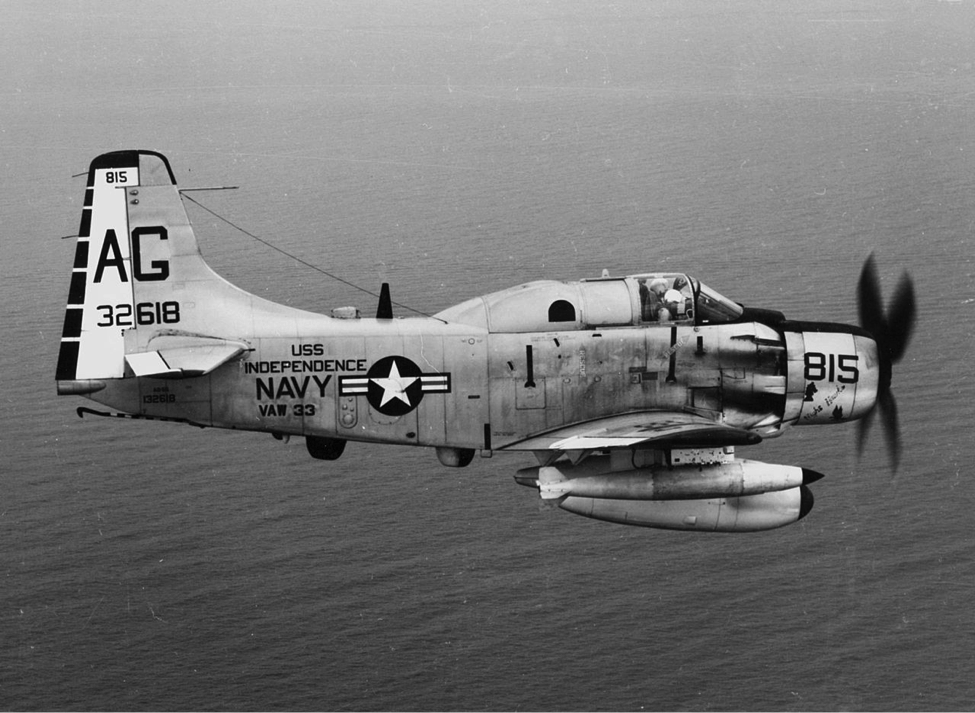To War in Korea
In 1949 it was assumed by BuAer that the current version of the Skyraider (the AD-4) would be the last version of the versatile aircraft to be built. Then Korea happened. Skyraiders from VA-55 Warhorses aboard the carrier Valley Forge (CV-45) were the first to fly combat sorties over Korea. Navy and Marine “Able Dogs” were able to carry anywhere from twice to four times the ordnance carried by either the Air Force F-51D Mustang or their own F-4U Corsairs, so the Skyraiders carried twice the load early and often. “Able Dogs” were capable of carrying more than their own weight in ordnance. In Korea the Skyraider even carried out the first and only torpedo attack by the type against the Hwacheon Dam, then controlled by North Korea, on May 2nd 1951.

Beware of Torque Roll
To increase survivability in the face of North Korean ground fire, ¼ to ½ inch armor was bolted on to Skyraiders to protect vital areas. Even with the armor, the war took a toll on the Able Dogs. 101 Skyraiders were lost in combat operations and another 27 to accidents. Many of the accidents were caused by a phenomenon called “torque roll”, which was a byproduct of the powerful R3350 engine and huge propeller. At low speed a sudden increase in power by the pilot could, and did, result in the aircraft unintentionally spinning around the propeller and loss of pilot control.

The Two Seater Skyraider
In July of 1953 when the Korean War ended, Skyraiders were still in production and new variants were in production. The AD-5 was the ultimate illustration of the versatility of Heinemann’s original design. Lengthened by two feet and widened to allow side-by-side seating the latest Skyraider could also accommodate additional crew under a lengthened canopy. To maintain directional stability the vertical tail was enlarged. Able to be used as a transport, cargo carrier, target tug, or as a traditional attack aircraft, the AD-5 was the ultimate adaptable Skyraider.

BuAer Alphabet Soup
By the time BuAer changed naval aircraft designations again in 1962, Skyraiders equipped 29 Navy and 13 Marine Attack squadrons. The AD Skyraiders became A-1 Skyraiders. The alphabet soup essentially meant that (stay with me here) the basic AD-5 attack version became the A-1E, the AD-5W AEW version became the EA-1E, the AD-5Q ECM version became the EA-1F, the AD-5N night attack version became the A-1G, and the single-seat attack AD-6 and AD-7 became the A-1H and A-1J respectively.

Augmented But Not Replaced
As Grumman A-6A Intruders and Douglas A-4 Skyhawks entered the fleet, the Skyraiders they replaced went into storage. That might have been the end for the venerable Douglas product, but another war was brewing and Skyraiders would find themselves in the thick of it right from the beginning and through to the end. A-1Hs attached to VA-52 Knightriders aboard USS Ticonderoga (CVA-14) and VA-145 Swordsmen aboard USS Constellation (CVA-64) took part in the first naval airstrikes against North Vietnam after the Tonkin Gulf Incident.

Watch Your Six With SPADs About
From then on the Navy Skyraiders attacked Viet Cong and North Vietnamese targets, performed close air support of troops in contact, flew rescue combat air patrol (RESCAP) missions, and in general did everything asked of them. Skyraiders even shot down two North Vietnamese MiG-17s when the jets got low and slow in front of the Skyraiders’ 20 millimeter cannons. A-1s fired rockets and missiles, dropped bombs and napalm, flares, and just about any weapon in the arsenal…even one Mark 1 Mod 0 toilet, on targets during their service in Vietnam.

Epitaph for Navy SPADs
The Skyraider was eventually replaced in Navy service primarily by the Vought A-7 Corsair II. On February 20th 1968, VA-25 Fist of the Fleet A-1Js flew the last Navy Skyraider combat sorties off the deck of the USS Coral Sea (CVA-43). The Firebirds of VAQ-33 flew the last Skyraider electronic countermeasures sortie of the war in December of 1968 using the EA-1F. By 1972, the Skyraider had been completely retired in Navy service. However, there was another service still using Skyraiders in Vietnam.

The United States Air Force flew Skyraiders in Vietnam from 1964 until 1972, when the remaining examples were transferred to the Vietnamese Air Force, whose pilots had been trained to fly them by the United States beginning in 1961.

[…] Ubangis both both equipped with the Douglas A-4C Skyhawk, VA-15 Valions flying the Douglas A-1H Skyraider, VAH-11 Checkertails flying the Douglas A-3B Skywarrior, a detachment from VAW-12 Bats flying the […]
Thanks for providing information about an aviation related topic unknown to me. Just enough detail to remain interesting start to finish.